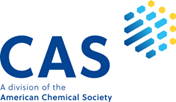Analysis of Patients Receiving Treatment for Inflammatory Breast Disease at Surgery Department of Tertiary Care Units
Treating Inflammatory Breast Disease in Tertiary Surgery Units
DOI:
https://doi.org/10.69750/dmls.01.01.012Keywords:
Breast abscesses, lactating women, inflammation, antibiotics, Ischemia, skin excoriation, wound sepsisAbstract
Background: In the Surgery Department of Tertiary Care Units, an analysis of patients receiving treatment for inflammatory breast disease presents a critical assessment of disease patterns and therapeutic outcomes. This evaluation is pivotal in understanding the prevalence and efficacy of treatment modalities in addressing complex breast conditions within specialized care settings.
Aims and Objectives: To assess the effectiveness of the care given to mastitis and breast abscess patients admitted to the surgical department of the Sir Gangaram Ram Hospital Lahore.
Study Design: Prospective Analytical Cross-sectional Study.
Place & duration of study: Current study was conducted in surgical department of the Sir Gangaram Ram Hospital Lahore from March 2023 to December 2023.
Methodology: The patients those visited and admitted with a diagnosis of breast abscess were included regardless of age, size of the abscess and co-morbidities. The patient was informed of the available treatment options, and their priority was taken into account for the chosen course of action. Total 100 female patients were divided in two different groups. In group-A 60 patients were operated with local anesthesia and their abscess size was larger than 2.5 cm in diameter. While in group-B, 40 patients were conservatively managed and either ultrasound guided aspiration or no intervention is used. Either the size of the abscess was less than 2.5 centimeters in these patients, or there were signs of inflammation without any fluctuation. Whereas in case of conservative treatment hot fomentation and antibiotics were recommended, some patients who received surgery or minimally invasive treatment also received prescriptions for antibiotics. The antibiotics used were a combination of a beta-lactamase inhibitor, clavulanic acid, and a broad spectrum penicillin, namely amoxicillin, which could be used as an adjuvant or sole therapy. If there was no need for surgery to treat the abscess, the treatment was considered successful. Bio- statistical program (SPSS) version 2022 were used for the raw data description.
Results: Total 100 female patients were considered and their aged from 20-40 years, lactating women were 42 while 58 women non-lactating. Group A consisted of 48 surgical patients who underwent incision and drainage, while Group B consisted of 52 patients who were treated conservatively. Ischemia, skin excoriation, wound sepsis, and postoperative septicemia were among the complications that were encountered during the postoperative period. Breast deformity, sinus formation, non-healing or closure, and organized abscess were diagnosed during the follow-up. There was no any mortality.
Conclusion: Surgical drainage is the only option for treating breast abscesses, both large and small, as it significantly reduces morbidity.
Downloads
References
Enkobahry A, Sime T, Kene K, Mateos T, Dilnesa S, Zawdie B. Blood biomarkers as potential malnutrition screening alternatives among adult patients with cancer on treatment in oncology unit of Jimma tertiary hospital: A cross-sectional analysis. BMC Nutr. 2023;9(1):38.
Taylor GB, Paviour SD, Musaad S, Jones WO, Holland DJ. A clinicopathological review of 34 cases of inflammatory breast disease showing an association between corynebacteria infection and granulomatous mastitis. Pathology. 2003;35(2):109–19.
Jafar D, Pesnani F, Arif S, Nasir A. Self-esteem of patients receiving chemotherapy treatment in a tertiary care hospital Karachi, Pakistan. Pak J Med Dent. 2020;9(3):60–4.
Ladha K, Melo MFV, McLean DJ, Wanderer JP, Grabitz SD, Kurth T, et al. Intraoperative protective mechanical ventilation and risk of postoperative respiratory complications: hospital based registry study. BMJ. 2015;351:h3646.
Chatterjee S, Chattopadhyay A, Todi SK. Outcomes of severe sepsis among adults in a tertiary care hospital in Kolkata – a preliminary study. J Anesth Intensive Care Med. 2018;6(2):555684.
Lal S, Khan E, Malik MA. Practical challenges of managing COVID-19 positive patients in the adult intensive care unit of a tertiary care teaching hospital of Ireland. Anaesth Pain Intensive Care. 2020;24(3):263–71.
Partridge J, Harari D, Martin F, Peacock J, Bell R, Mohammed A, et al. Randomized clinical trial of comprehensive geriatric assessment and optimization in vascular surgery. Br J Surg. 2017;104(6):679–87.
Motsisim S, Ballot DE. A review of necrotising enterocolitis in very low birth weight babies in a tertiary hospital in Johannesburg. Afr J Paediatr Surg. 2023;20(1):59–66.
Garassino MC, Whisenant JG, Huang LC, Trama A, Torri V, Agustoni F, et al. COVID-19 in patients with thoracic malignancies (TERAVOLT): first results of an international, registry-based cohort study. Lancet Oncol. 2020;21(7):914–22.
Hamieh NM, Akel R, Anouti B, Traboulsi C, Makki I, Hamieh L, et al. Cancer-related pain: prevalence, severity and management in a tertiary care center in the Middle East. Asian Pac J Cancer Prev. 2018;19(3):769–75.
McGillicuddy E, Schuster K, Barre K, Suarez L, Hall M, Kaml G, et al. Non-operative management of acute cholecystitis in the elderly. Br J Surg. 2012;99(9):1254–61.
Mei AHY, Jin WLC, Hwang MKY, Meng YC, Seng LC, Yaw WH. Value of the Palliative Performance Scale in prognostication of advanced cancer patients in a tertiary care setting. J Palliat Med. 2013;16(8):887–93.
Low JA, Berman AW, Steinberg SM, Danforth DN, Lippman ME, Swain SM. Long-term follow-up for locally advanced and inflammatory breast cancer patients treated with multimodality therapy. J Clin Oncol. 2004;22(20):4067–74.
Matthews LR, Ahmed Y, Wilson KL, Griggs DD, Danner OK. Worsening severity of vitamin D deficiency is associated with increased length of stay, SICU cost, and mortality rate in surgical ICU patients. Am J Surg. 2012;204(1):37–43.
Lim B, Woodward WA, Wang X, Reuben JM, Ueno NT. Inflammatory breast cancer biology: the tumour microenvironment is key. Nat Rev Cancer. 2018;18(8):485–99.
Chaparro M, Verreth A, Lobaton T, Gravito-Soares E, Julsgaard M, Savarino E, et al. Long-term safety of in utero exposure to anti-TNFα drugs for the treatment of inflammatory bowel disease: results from the TEDDY study. Am J Gastroenterol. 2018;113(3):396–403.
Wolfrum A, Kümmel S, Theuerkauf I, Pelz E, Reinisch M. Granulomatous mastitis: a therapeutic and diagnostic challenge. Breast Care (Basel). 2018;13(6):413–8.
He Y, Wong YWY, Ngeow AJH, Sim EY, Cherng BPZ, Arunachalam S, et al. Establishment of an isolation maternity unit in a tertiary hospital during COVID-19 pandemic. BMC Pregnancy Childbirth. 2022;22(1):317.
Senkus E, Kyriakides S, Ohno S, Penault-Llorca F, Poortmans P, Rutgers E, et al. Primary breast cancer: ESMO Clinical Practice Guidelines. Ann Oncol. 2015;26(Suppl 5):v8–30.
Kepkey BB. Barriers and facilitators of adherence to IV chemotherapy among breast cancer patients at a tertiary hospital in the Western Cape. Stellenbosch University; 2022. (Thesis—no journal abbreviation)
Moletta L, Pierobon ES, Capovilla G, Costantini M, Salvador R, Merigliano S, et al. International guidelines and recommendations for surgery during COVID-19 pandemic: systematic review. Int J Surg. 2020;79:180–8.






















